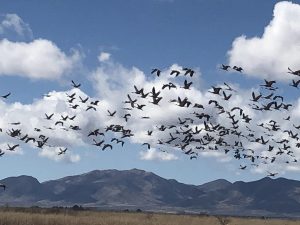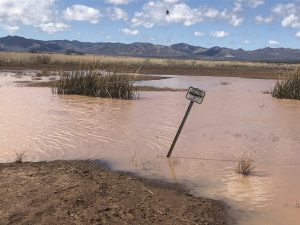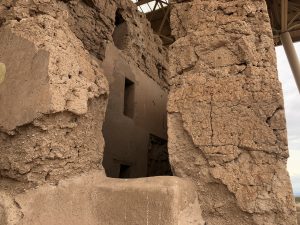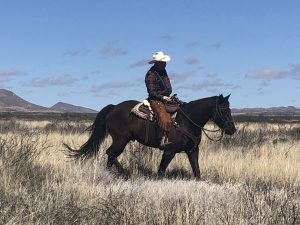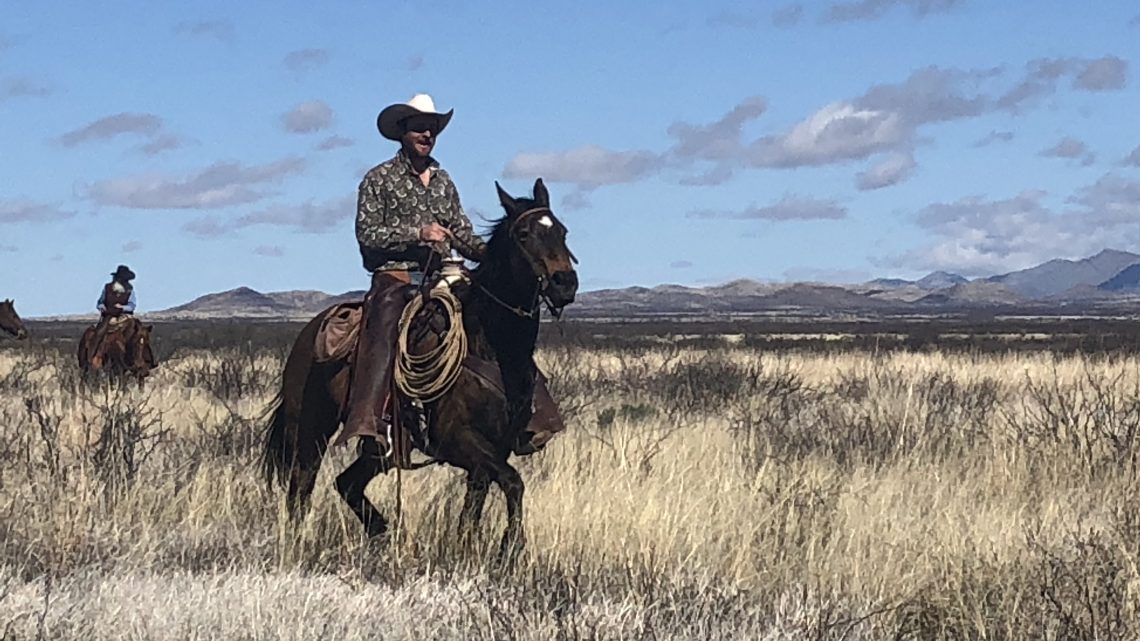The above quote is not necessarily apropos to our current times, what with COVID-19 on the horizon, but a change of place is often pleasant and we’ve lately been able to take some short trips.
We did a bit of exploring outside of Benson, Arizona this week, trekking down to Whitewater Draw, sixty miles south of Willcox, to view sandhill cranes gathered in the wetlands and grasslands there. The shallow roosting waters are safe from predators and the surrounding farmlands offer easily accessible food sources.
These cranes, I discovered, arrive in late September or early October when the temperatures in Eastern Canada, Siberia, Canada and Alaska, from whence they come, drop and they head to southeastern Arizona, staying until late February. Yes, you got that right. Some of these cranes come all the way from Siberia. Many of the 20,000 plus cranes that roosted here this year are already on their way home, but around 14,000 still remain. By month’s end, they should all be gone as long as our President doesn’t put travel restrictions on them.
Lifting off each morning just before dawn, the cranes go in search of food in the surrounding farmlands, then return around 10 a.m. We arrived mid-morning and were able to watch them return, some in small groups, some in masses. The morning of our visit, they were somewhat skittish, startling easily and taking flight, soaring over the wetlands, then landing again minutes later, emitting their distinctive loud, rattling bugle calls.
They’ve spent months enjoying the warmer climate of southeast Arizona where they have good roosting spots and plentiful food.
Besides the sandhill cranes, we were privileged to see flocks of yellow-winged blackbirds flashing past and landing in the sedges and cattails among the wetlands where they gathered in communities, perched closely together. Often, several green frogs sitting beside pools of water would jump with a plop into the water when they perceived a threat in our footsteps.
Watching this wildlife, I came to the realization that these cranes, blackbirds, frogs were all doing exactly what God created them to do. I was reminded that I, too, can please God by just being. As much as He wants us to be a blessing to others, He wants us to be blessed and we are blessed when we take in His amazing creation. Through it, we are imperceptibly changed.
Between the wetlands and home, we spied a group of cowboys in the desert off the road. Stopping to get a picture, they informed me they were on a cattle drive. I assumed they were on their way to the cattle as there were none with them. Then again, maybe they were pulling my leg. Regardless, they made quite the picture.
Later that week, we traveled to the little town of Casa Grande an hour and a half south of Phoenix to meet with relatives for lunch. After parting, we headed to Casa Grande National Park where we viewed the Indian ruins left by the Hohokam Indians who lived in the area from about 300 A.D. to 1400 A.D. They were able to wrest out of this hot, dry place with few water sources and little rainfall, the things they needed to survive, growing their own food, hunting, and gathering. They tapped the Salt and Gila rivers with irrigation canals, diverting water to the floodplains, where the rich soil helped them grow crops like corn, beans, squash, tobacco, cotton, and agave.
It was at this location that these Indians built a huge structure considering the equipment (or lack thereof) they had to work with. The structure, that has survived more than 650 years, is a four-story, 60-foot-long building made from caliche, a cement-like material created from the desert sand, clay, and calcium carbonate, or limestone. It took 3,000 tons of this material to build the Great House with walls four feet thick at the base and tapering toward the top. They used hundreds of juniper, pine, and fir trees to anchor the walls, ceilings, and floors. It was pretty much the architectural marvel of its time. Go see it if you have the chance.
